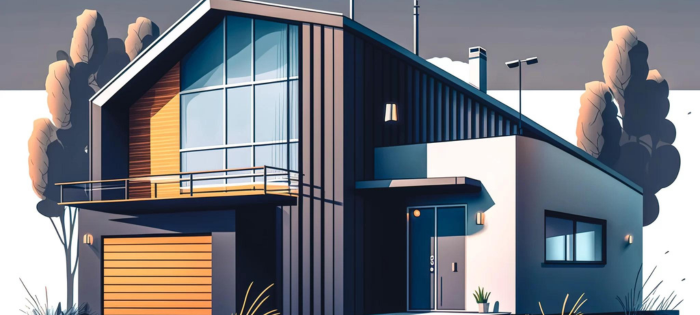
In architecture, visualization plays a pivotal role in conveying designs, capturing imagination, and driving innovation. As technology advances, rendering techniques evolve, shaping the future landscape of architectural visualization.
From photorealistic renderings to immersive virtual reality experiences, the possibilities seem boundless. But what trends are driving this evolution? What impact do they have on design workflows, client interactions, and the built environment?
Real-time rendering is revolutionizing architectural visualization by providing instant feedback and interactive experiences. Over 75% of architectural visualization professionals use real-time rendering weekly. This technology enables architects to explore design options dynamically, fostering creativity and efficiency. Real-time rendering may democratize architectural visualization tools but could also deepen the digital divide due to accessibility disparities.
Virtual reality is reshaping how architects present designs and how clients experience spaces. VR allows stakeholders to virtually walk through buildings before construction, enhancing decision-making and reducing errors. Yet, concerns about VR's accessibility and affordability persist. Architects can ensure inclusivity in VR experiences by prioritizing accessibility, diverse representation, and user-friendly interfaces. VR can enhance public engagement by offering immersive experiences, fostering better understanding, and enabling community feedback in architectural projects.
Augmented reality overlays digital information onto the physical world, offering unique opportunities for architectural visualization. With AR, architects can superimpose designs onto existing environments, facilitating on-site decision-making and contextual understanding. Despite its potential, AR adoption in architecture remains relatively low. Barriers to widespread AR implementation in architecture maybe due to cost, technological limitations, and learning curves. Architects can leverage AR to bridge design-construction gaps by overlaying digital models onto physical spaces, aiding visualization, and enhancing on-site coordination and communication.
While photorealistic rendering remains popular, there's a growing interest in artistic expression through non-photorealistic rendering (NPR). NPR techniques mimic hand-drawn sketches or paintings, adding a unique aesthetic to architectural visualization. This trend challenges traditional notions of realism and opens doors to unconventional design presentations. Yet, NPR's subjective nature raises questions about its effectiveness in conveying design intent.Architects can balance artistic expression and clarity in NPR renderings by prioritizing key design elements while maintaining readability. NPR may gain mainstream popularity for its unique aesthetic appeal and storytelling potential, but could remain niche due to specialized use cases and preferences.
Generative design algorithms and parametric modeling software are empowering architects to explore complex design possibilities and optimize performance parameters. These tools leverage computational power to generate and evaluate countless design iterations based on specified criteria. The adoption of generative design is on the rise, with firms seeking to streamline the design process and maximize efficiency. Architects can harness generative design by setting clear design goals, integrating contextual parameters, and iterating designs based on human intuition and expertise. By guiding algorithms and evaluating generated solutions critically, architects retain agency and ensure sensitivity to context throughout the design process.
Photogrammetry techniques enable architects to create detailed 3D models of existing structures or environments using photographs. Reality capture technologies, such as LiDAR scanning, further enhance the accuracy and completeness of these models. These tools are invaluable for renovation projects, historical preservation, and urban planning. Despite their utility, challenges remain in processing large datasets and maintaining model fidelity. Architects can integrate photogrammetry and reality capture by accurately documenting existing conditions, aiding design decisions and preserving heritage. Ethical considerations include privacy, consent, and cultural sensitivity, requiring responsible data acquisition and respectful representation of real-world spaces.
Architectural visualization is increasingly intersecting with other disciplines, such as gaming, film, and product design. Collaborations between architects and professionals from these fields bring fresh perspectives and innovative techniques to visualization practices. For example, game engines like Unreal Engine and Unity are gaining traction in architectural visualization due to their real-time rendering capabilities and interactive features. Yet, differences in workflow and terminology between disciplines can present hurdles to effective collaboration. Interdisciplinary education plays a crucial role in preparing future architects for collaboration by instilling adaptability, empathy, and fluency in cross-disciplinary communication and tools. Experiential learning and collaborative projects can further bridge the gap between disciplines, nurturing holistic approaches to architectural visualization.
Beyond functional considerations, architects are paying more attention to the emotional and experiential aspects of design. Visualization techniques are evolving to convey the intangible qualities of space, such as ambiance, mood, and narrative. Emotional design aims to create spaces that resonate with users on a visceral level, fostering connections and enhancing well-being. However, quantifying emotional responses to architectural visualization poses a challenge. Architects can measure and incorporate user feedback on emotional responses through surveys, interviews, and observational studies, then iteratively refine designs based on findings. Visualization techniques like immersive VR, photorealistic renderings, and animations can effectively communicate experiential qualities, enabling users to interact with and experience spaces before construction, aiding in understanding and eliciting emotional responses.
The future of architectural visualization promises exciting advancements driven by technological innovation and interdisciplinary collaboration. Shree Design, as a specialized healthcare architectural firm, is poised to play a pivotal role in this evolution. By leveraging insights from various industries, embracing cutting-edge visualization techniques, and prioritizing client collaboration, Shree Design can enhance its visualization workflows to create aesthetically pleasing, sustainable, and functional healthcare facilities. Shree Design aims to continue its legacy of excellence in healthcare architecture, contributing to improved patient outcomes and community well-being.
© Copyright 2021 SHREEDESIGNTEAM. All Rights Reserved